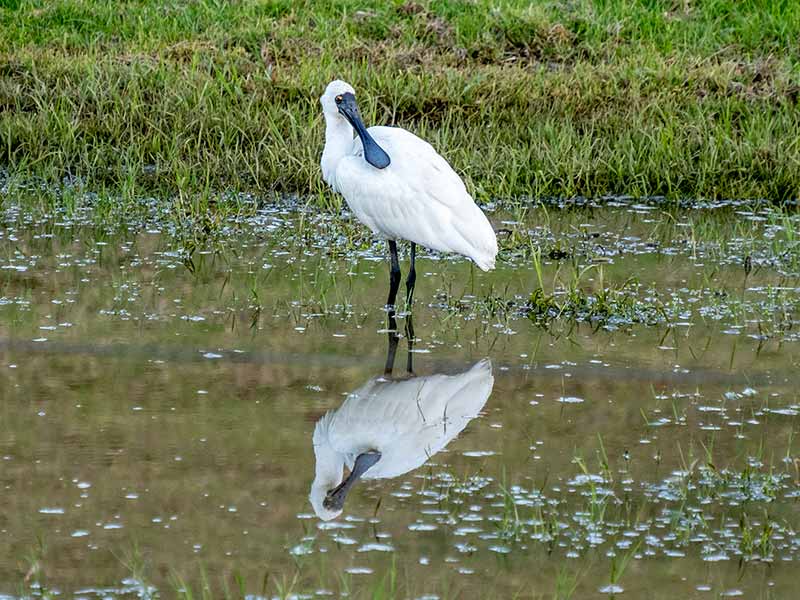A total of about 240 different birds have been recorded at Lord Howe Island, some only once, most likely blown from the mainland in stormy weather. Others are seen regularly each year; these are migratory birds, such as the Shining bronze cuckoo, that travels each season between New Zealand and New Guinea; others are arctic shorebirds travelling annually from the Arctic circle into the Southern hemisphere islands and continents for summer – Bar-tailed godwits, Eastern Golden plover, Ruddy turnstone and Whimbrel.
In late March, a Great egret was seen in the paddock just behind Oceanview; a few days later, it was down in a paddock near Soldier’s Creek; on April 3, it was in the Old Settlement paddock and was seen there for the next week. In early April, a Royal spoonbill arrived and was seen at the Old Settlement and Mosely Park.


Four Grey teals have been spotted around the Island since November and are often seen in Mosely Park swamp or the dam in Old Settlement paddock. A few Double banded plovers have been seen on the airstrip; these birds breed in the New Zealand summer and cross to Australia in winter. A few remain at Lord Howe each year and we see these regularly from February through to about August.
In October 2023, 34 Little black cormorants arrived on the Island. Many are still here, although some dead ones have been reported on Island beaches – perhaps about 20 remain. They have been joined by eight Great cormorants, two Pied cormorants, and several Little Pied cormorants. In March, Jack Shick made several sightings at sea of a Red-footed booby.
We are starting to see the first of the Cattle egrets that turn up each year in April and again in October. After breeding in Northern New South Wales in summer, some fly to New Zealand and a few stop here briefly to rest before continuing their trans-Tasman flight; and in October, we see them return from New Zealand, transiting to New South Wales. A few of these birds usually remain over winter and are seen in paddock areas, where they follow cattle in order to forage for worms in the soil disturbed by cattle hooves.
The Grey fantails that were reported by several residents last May and June are still being spotted around the Island; in late March, one was seen on the Transit Hill track. There is a possibility that a breeding population may have established itself here, so keep your eyes open.
If you see any unusual birds, you can log your observations at the Museum on a form available in the Environmental gallery.




